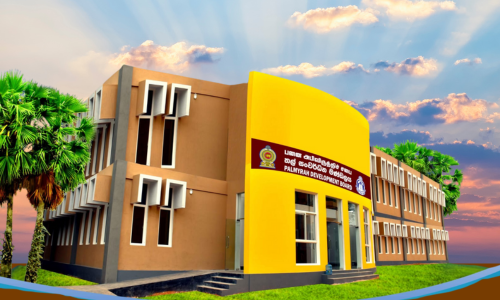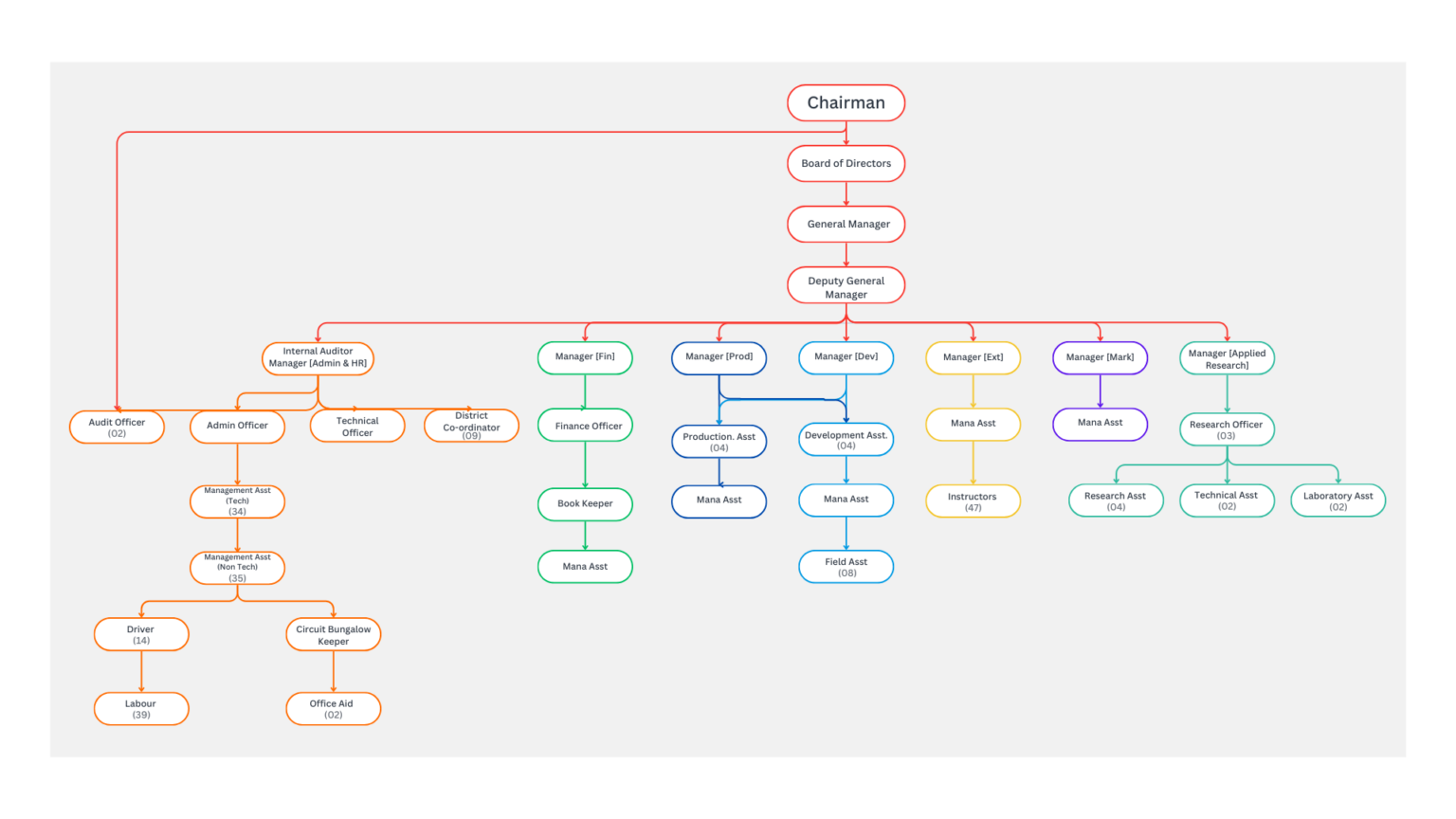
The Palmyrah Development Board (PDB) which originally came under the Ministry of Plantations was constituted by Gazette notification of 18 August 1978 published in terms of Amendment no 24 of 1975; to the Sri Lanka Coconut Development Act no 46 of 1971 to carry out all functions in relation to Palmyrah plantations. Subsequently, PDB came under the Ministry of Plantation and Community Infrastructure by Gazette notification in 2024.
The main activities of the PDB are restoration of Palmyrah plantations, renovation and enhancement of existing model farms, conduct handicraft training programs, production of various Palmyrah items, promotion of Palmyrah products, conducting research relating to food products and other product development, and operating sales outlets called “Katpaham”.
Our Vision
Develop the Palmyrah sector as a dynamic sector for livelihood development.
Our Mission
Develop, promote, popularize and regulate sustainable Palmyrah industry to be a significant contributor to the Gross Domestic Product (GDP) of Country.
Our Goals & Objectives
- To provide a sound organizational base for Palmyrah based Development and Community upliftment.
- To provide a sound scientific basis for sustainable development of the Palmyrah based Industry in Sri Lanka at Micro enterprises, Intermediate industry & Hi-tech industry levels.
- To develop appropriate crop conservation, processing and product development technologies for Palmyrah resources through basic strategic and applied research leading to Hi-tech development.
- To develop improved Palmyrah based Crop & Livestock production systems to usher an integrated development effort.
- To effectively transfer technologies developed by the Palmyrah Development Board appropriate to dependents and industrialists.
- To serve as a national repository for the genetic resources of Palmyrah and produce improved planting materials.
- To collate and disseminate technical information on Palmyrah along with popularized versions with practical applications.
- To optimize Palmyrah based institutional development and support so that different options on managing production systems can be made available.
Chairman & Board Directors of Palmyrah Development – 2025
The Palmyrah Board is adopting the policy, which is already mentioned in the Coconut Development Act no 46 of 1971 amended by the Coconut Development (amendment) law No. 24 of 1975 and Amendment Act 122 No. 40 of 2003. Board of Directors comprises of nine members appointed by the Minister and one of the members being a representative of the Ministry of the Minister in charge of the subject of finance and out of the appointed eight members, Minister appoints the Chairman.
Meeting of the Board of Directors
Board meets every month, to deliberate and decide on important policy, administrative and management matters.
| Chairman and Board of Directors Team Members | ||
|---|---|---|
| Name | Designation | Contact No. / Email Address |
| Mr. R. Raveenthiran | Chairman, PDB | +94 77 386 8588 / rasar60@gmail.com |
| Mr. K.B.S.Fernando | Board of Director | suradewa@gmail.com |
| Mrs. S.K.Withanage | Board of Director | withanagesajeewa@gmail.com | Prof. Kandiah Pakeerathan | Board of Director | +94 71 861 7928 / pakeerathank@univ.jfn.ac.lk |
| Mr. K. Nadarajah Kamalaharan | Board of Director | shivakugan@gmail.com | Mr. A. Kanapathippillai | Board of Director |
| Mr. Srithayalan Srivijeindran | Deputy General Manager / Secretary | +94 77 378 7380 / srthyln@yahoo.com |
Meeting of the Board of Directors
The Audit & Management committee is headed by Director representing the General Treasury who is an independent non-executive Director and represented by two other non-executive Directors. The Chief Executive Officer attends the meeting by invitation. The Audit & Management Committee among other things reviews internal control systems, adherence to risk management measures, compliance with statutory requirements.
General Manager and the Manager Finance, Manager Administration and a representative from the Auditor General’s Department attended the meetings by invitation.
Audit and Management Committee Report
The objectives of the Committee are to assists the Board of Directors in carrying out their responsibilities pertaining to the following: –
- Ensure that a sound financial reporting system is in place and is well to give accurate, appropriate and timely information to the Management and Regulatory Authorities
- Management of Business Risks
- Management of Internal Controls
- Ensure systems are in place, report situations that conflict in interest with the management and other related parties of the Board and assess whether they are fair, reasonable and report therefore to the Board for its information to be reflected in the Financial Statements.
- Ensure compliance with laws and policies of the Board
- Monitor the functions of the Internal Auditor
- Asses the external audit functions
The Audit & Management Committee reviewed the Board’s interim and annual financial statements and approved the same prior to the publication with the concurrence of the Board.
Considering the information received during the deliberations of the committee and results of the reviews carried out by the Department of Auditor General, the Committee is satisfied that the system of Internal Control is in place provides a reasonable assurance on safeguarding the Board’s assets and the reliability of Financial Statements produced, which are under review, with professional input, in an endeavour to further improve the existing systems.
AMC Team Members
| Name | Designation | Contact No. / Email Address |
| Mrs. S.K.Withanage | Committee Chairperson | withanagesajeewa@gmail.com |
| Mr. K.B.S.Fernando | Board Member | suradewa@gmail.com | Mr. A. Kanapathippillai | Board Member | Mr. K.A.C. Shamantha | Observer |
| Mr. J.A.S.D. Perera | Observer | |
Internal Control
The Board has taken steps to appoint Tender Boards, Pricing Committee, and Purchasing Committee to ensure that the required procedure is followed in the procurement of supplies.
Management
Ten divisional heads function under the General Manager. The divisional heads collaborate with the Districts Coordinators. Each divisional head reports to the General Manager, the chief executive officer.



